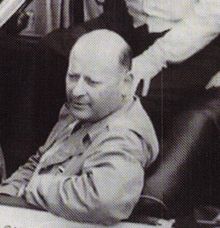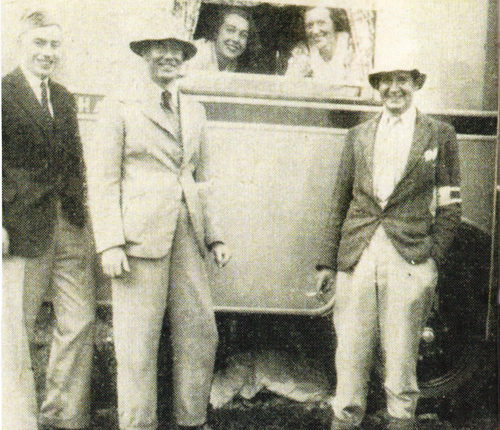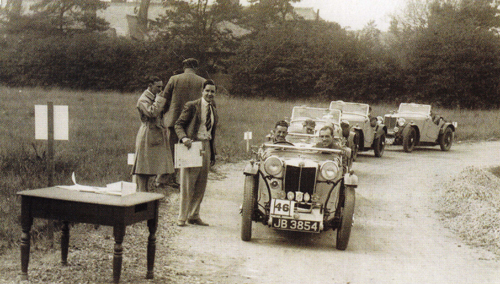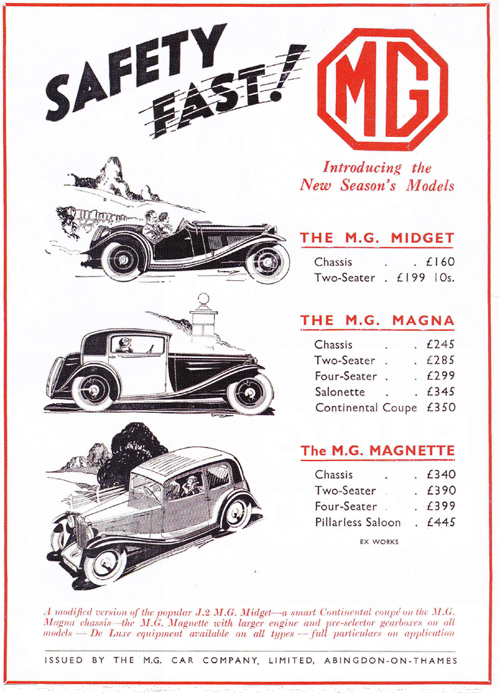History of the MG Car Club: Part 3

 Part 3 of this multi-part series of the MG Car Club History covers the early 1930s. Alan Hess was the second Club Secretary.
Part 3 of this multi-part series of the MG Car Club History covers the early 1930s. Alan Hess was the second Club Secretary.
THE EARLY YEARS 1930s – ALAN HESS
When, in August, 1932, I was invited to take over the secretariat of the MG Car Club, I did not realise all the hazards involved in what sounded an attractive prospect!
You see, the trouble about being a club secretary is that you are doomed before you start; either the thing is a failure or else it becomes unwieldy. Anyhow, I took over in September and found that the Club had 210 members.
I was fortunate in having around me a committee of enthusiasts. Men who, almost without exception, turned up regularly at our committee meetings, which were held every week at that time. Their enthusiasm and their constructive criticism and practical help were such that by the following April the membership had topped the 500 mark; 194 having been enrolled in 16 weeks.

The first event we ran was a scrounging trial. I remember very well why we chose this type of event as it is a sort of secretary’s benefit in that it virtually runs itself!
All we of the organising committee had to do was to assemble our competitors at the start, at Fox & Nicholls’ Garage on the Kingston Bypass (Surrey), give each driver a list of the objects to be scrounged, send them off, and then amble at our leisure to the finishing point, in this case the Aero Clubhouse at Brooklands, to await the first arrival and his collection of ‘exhibits’,
As it happened, there was nearly a dead heat as two cars screamed to a standstill at the finish, absolutely neck-and-neck, but ties were decided on the quality of the articles collected and Strong Foster, the winner, was found to have a worm, which when stretched, measured 0.75 inches more than that of his rival.
The following month l essayed to run a Showtime Dinner Dance at very short notice, The function was held at a London restaurant, and I had been warned that at a somewhat similar function run by another club, substantial damage had been done by certain members who had imbibed too freely, and the club had to foot a large bill as a result. However, I need not have had any misgivings about the MG Car Club members. That was before the days of the memorable down stage parties!
At the beginning of 1933 things really began to hum in the Club. Scottish and Northern Centres had been formed in Edinburgh and Newcastle, and Associate Membership was introduced. In addition to this, negotiations were proceeding for the formation of a Midlands Centre, with headquarters in Birmingham, and the Committee had approved the principle of forming an MG Car Club team to represent the Club in trials, for invitations were pouring in upon us to compete in practically every event held, since our members were dyed-in-the-wool trials enthusiasts. Thus, really, was born the forerunner of the ‘Cream Crackers’ and ‘Three Musketeers’ teams, of which you may perhaps have heard.

During 1933 the Club held a number of highly successful events of its own. First came the aforementioned Scrounging Trial, then the Chilterns Trial, in April, in which 50 competitors started and more than a dozen finished ‘Clean’, the premier award going to C.G. Fitt,
The event was not without its minor disasters, however, for the Trials Secretary, an enthusiast named E. Wood who hailed from Leigh-on-Sea (Essex), ran a big end on the way home, and was towed 80 odd miles, while l had to abandon my car in Chesham with distributor trouble, arriving home at 4am in a borrowed car, which, I may add, called for a considerable crop of explanations.
That a club secretary’s lot can sometimes be fairly strenuous is indicated by a weekend in the following July, which sticks out in my memory. It was proposed to run a team of L-type Magnas in the relay race later that month, and there was an inter club meeting at Brooklands on the 8th so it was decided to let me enter one of these cars for a three lap event that afternoon to get the feel of it.
I duly turned up at Abingdon in my own car on the Friday morning and left it there, departing inflated with pride, in the L-type. Having tried not too hard, and finished sixth at Brooklands the following day, I drove the car straight from the track to Surbiton (Surrey), where I picked up G.G. Zeigler (a most valuable committee member of the period) and dashed to Beaconsfield (Buckinghamshire), whence we were starting our night trial.
Driving all night, we called at the intermediate time check at Winchester (Hampshire), and thence repaired to the finish and breakfast at Petersfield, immediately after which we turned the hard-working Magna’s nose northwards and ran up to Birmingham where the newly formed Midland Centre was running its first affair, a gymkhana, on the Sunday afternoon. Very tired, but glowing with a feeling of unctuous rectitude, we arrived home at about 1am on the Monday morning with the prospect of a week’s work in store!
The Relay Race went off according to plan, and the Club team, comprising Charles Martin, G.W.J.H. Wright and the writer, won. The same team with L.F. Welch, the (then) Earl of March, and T.H. Wisdom as co-drivers ran in the BRDC 500 Miles Race the following September. Martin and Welch captured second place and the team lost the Field Team Trophy by only 26 seconds.
On September 9 the Club held its now famous Abingdon-Abingdon Trial, the team prize being carried off by a Singer Nine Team. G.A. Forbes (K3) won the MG Challenge Trophy, and W.G. Everitt (L-type Magna), now a director of the Crystal Palace Circuit, gained the P.J. Evans cup for the best performance in a car up to 1100cc.

About this time, realising that even members of the MG Car Club may have their secret vanities, I conceived the droll notion of instituting Club colours and a Club tie. This is now a familiar spectacle at all the better functions, and I never see one of these confections without a pang as of a father whose child has just passed him by without the faintest glint of recognition!
By now too, The MG Magazine, a forebear of The Sports Car was going strong, and the Club’s events were copiously and fairly accurately reported for all to see. The result was an ever growing membership, very largely contributed to by the local Centres which were going great guns and running a number of very successful competitions and social events.
October 19, 1933, saw the first MG Car Club Annual Dinner and Dance at the Park Lane Hotel and the first function of its kind (much copied by other clubs) at which speakers were regulated by automatic lights. The cabaret that night comprised Elsie and Doris Waters, John Tilley and the Western Brothers, and a good time was had by all!
Early in the New Year at the Annual General Meeting I tendered my resignation and ‘Mit’ Harris was appointed. During my 15 months of secretaryship I met many fine sportsmen and had the privilege of co-operating with the best bunch of Committee men and Local Centre officials any Secretary could wish for, but before closing I must pay an especial tribute to one man who was always a positive tower of strength and absolutely tireless in his efforts for the Club. That man’s name is George Tuck.
Alan Hess was an MG enthusiast with talents as a journalist, fiction writer, painter, broadcaster and race driver. At the time when he took over as the second Secretary of the Club he was editor of The MG Magazine. He had raced at Brooklands with a team of Magnas and he also drove the Magna on the 1931 Alpine Rally. Ln later years he became Publicity Manager for the Austin Motor Co and is remembered for his record breaking drive around the world in 21 days in an Austin 440 Sports.
Frank ‘Mit’ Harris was the third secretary of the Club, taking over in 1934 and serving for 10 year. At the time he was proprietor of The Sports Car magazine in which he regularly reported MG Car Club news and features. His enthusiasm for MG saw him as an active competitor and event organiser as well as maintaining the job of Club secretary through the difficult wartime years. He retired from the RAF as a Wing Commander and died in 1945 at the age of only 4., His wife Mary was actively involved with the Club; in the immediate post-war period she was responsible for helping get the Club underway and ,in more recent years she donated the Mary Harris Trophy, which remains an annual award with the MMM Register.
George Tuck was one of the founders of the original Club and was involved with the motor industry and MGs throughout his working life. He was interviewed by Cecil Kimber in 1929 to join the Sales and Publicity office of MG and was appointed Publicity Manager in the following year. George’s name was linked to the design of the original octagon. He introduced the Safety Fast! slogan and handled the production of MG technical literature and advertising cop. George was responsible for establishing important dealerships in Europe, and after the War these outlets directly resulted in American Gls buying the early TCs there resulting in the wave of enthusiasm for MGs in the US market. He later joined the Nuffield organisation as the representative for Europe and Africa, the USA and the Far East. He became Export Director for BMC in 1952 and was later promoted to General Manager of BMC Southern Africa. He retired in 1969 to live in South Africa and was elected a Vice President of the main MG Car Club as well as being a long serving President of the Combined South African Centres.

NAMGAR would like to thank Andy Knott, Editor, Safety Fast! for his kind permission to reproduce these articles.

